In fact, according to Ahrefs’ Keywords Explorer, 43% of search queries now show a PAA box:
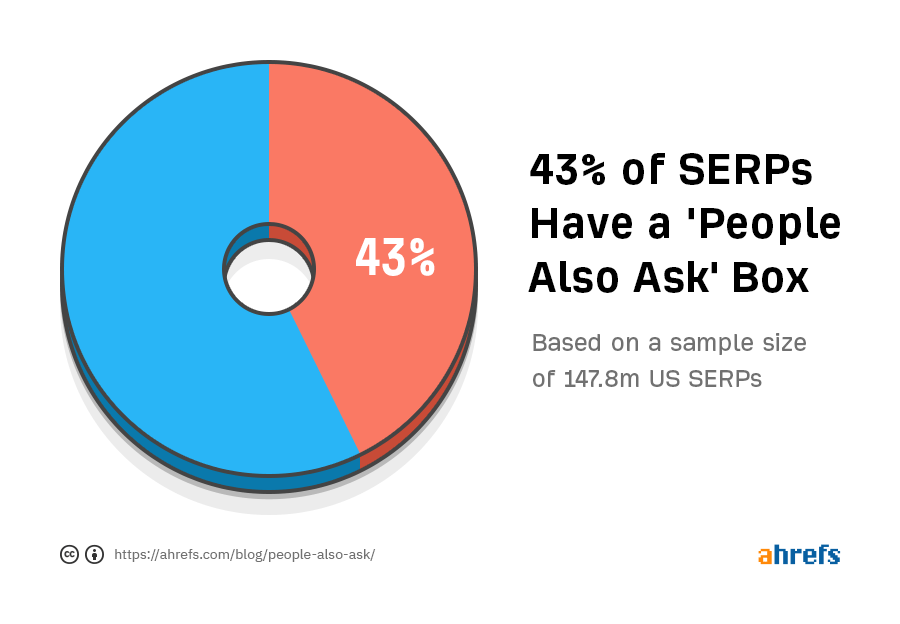
In this guide, we’ll talk about how you can rank in PAA boxes, whether you should even bother, and other ways they can help your SEO.
But first, the basics…
- What is the ‘People Also Ask’ (PAA) box?
- Is it worth trying to rank in PAA boxes?
- How to rank in PAA boxes
- Other ways to use PAA boxes to improve SEO
The ‘People Also Ask’ (PAA) box is a Google SERP feature that answers questions related to the user’s search query. Each answer comes from a web page, and Google provides a clickable link to the source below each one.
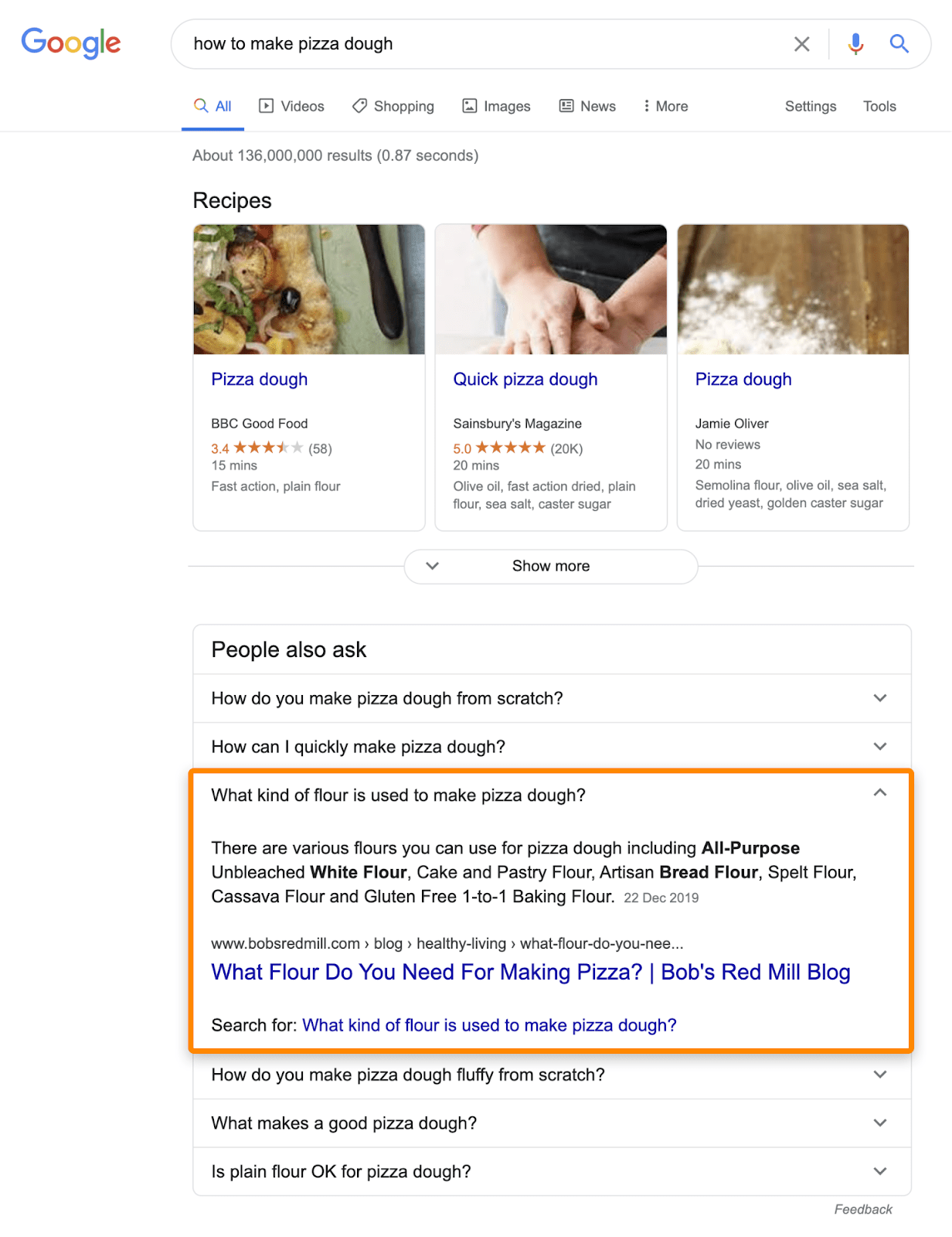
Four things to know about ‘People Also Ask’ boxes
Before we talk about if and how you should pursue PAA rankings, let’s cover a few things to keep in mind.
- PAA boxes can appear in different SERP positions
- PAA questions are seemingly infinite
- PAA answer formats vary
- PAA questions always* trigger the same answer
1. PAA boxes can appear in different SERP positions
Unlike featured snippets, which usually appear either first or second in the search results, PAA boxes can seemingly appear in almost any position.
For example, it shows in position #2 for the query ‘how to become a paramedic’:
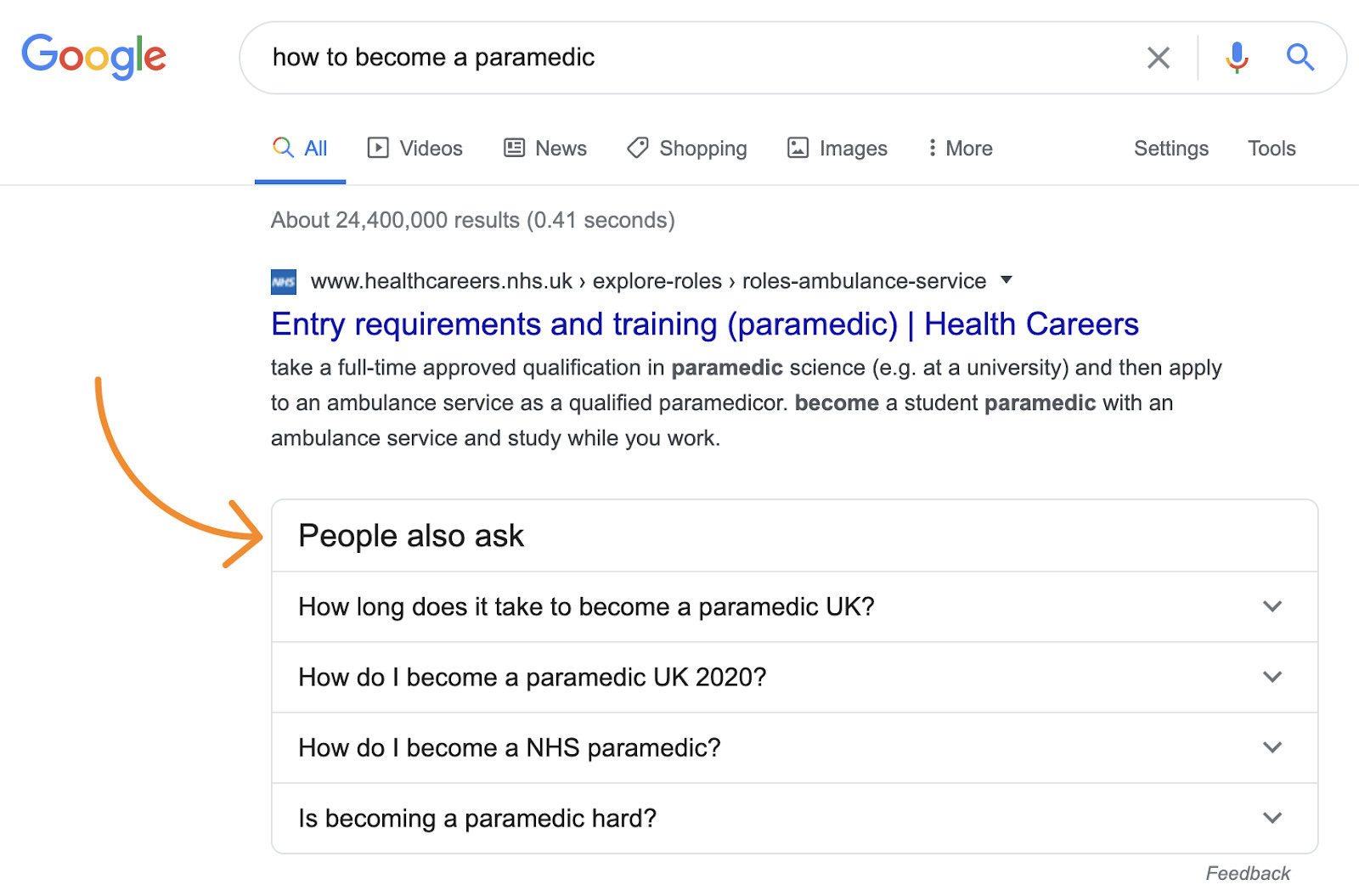
But for ‘blog post templates,’ it doesn’t show up until position #6.

For some queries, the PAA box doesn’t even appear on the first page.
2. PAA questions are seemingly infinite
More questions load whenever you click to expand to reveal an answer in the PAA box. And having done some serious clicking, it doesn’t look like there’s an end to this.
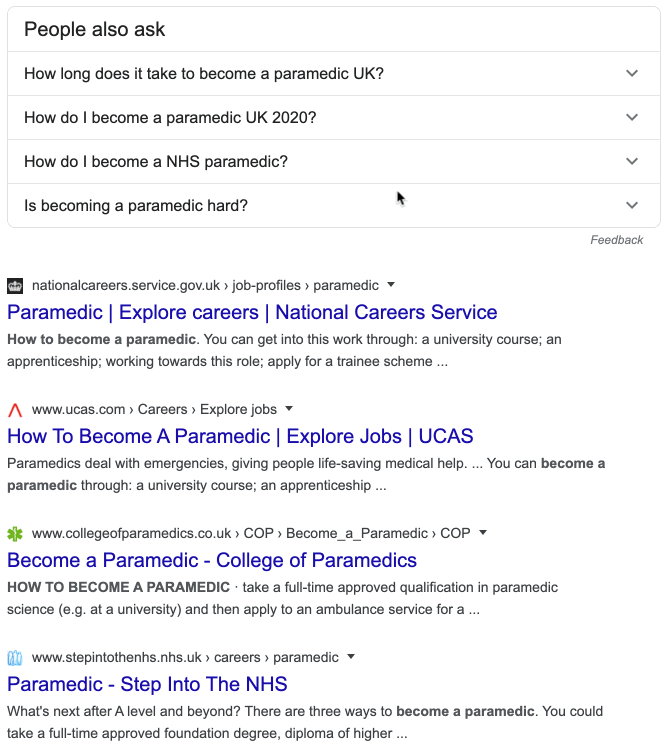
3. PAA answer formats vary
Like featured snippets, answers to related questions in PAA boxes come in different formats. Paragraphs, lists, and tables seem to be the most common, but videos sometimes show up, too.
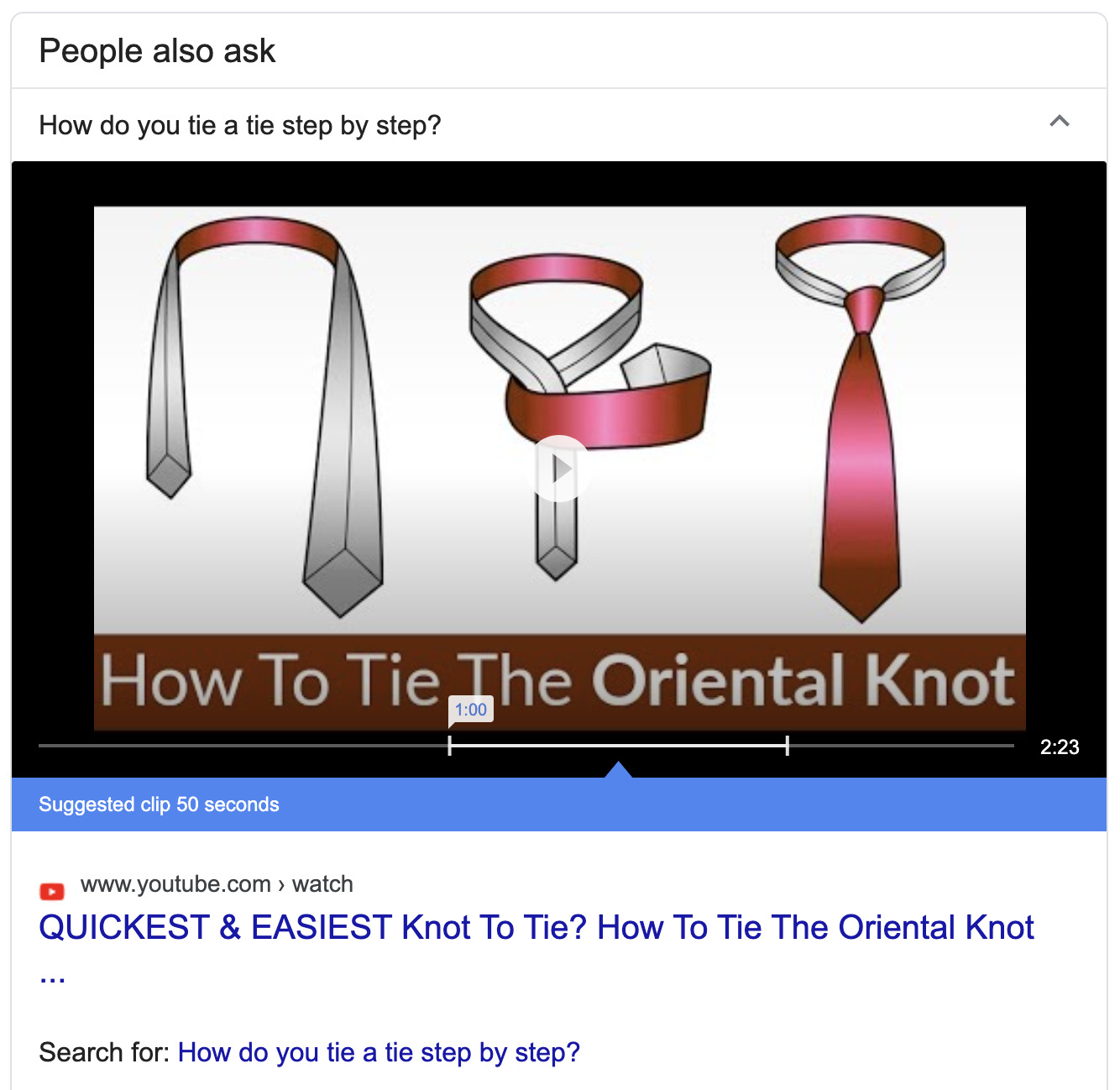
4. PAA questions always* trigger the same answer
Although the same questions often show up in PAA boxes across multiple search queries, Google appears to use the same source for the answer every time.
For instance, “What is the most searched thing on Google ever?” shows up in the PAA box for queries like “google trend searches” and “how many searches on google.” And the answer is pulled from the same source in both cases.
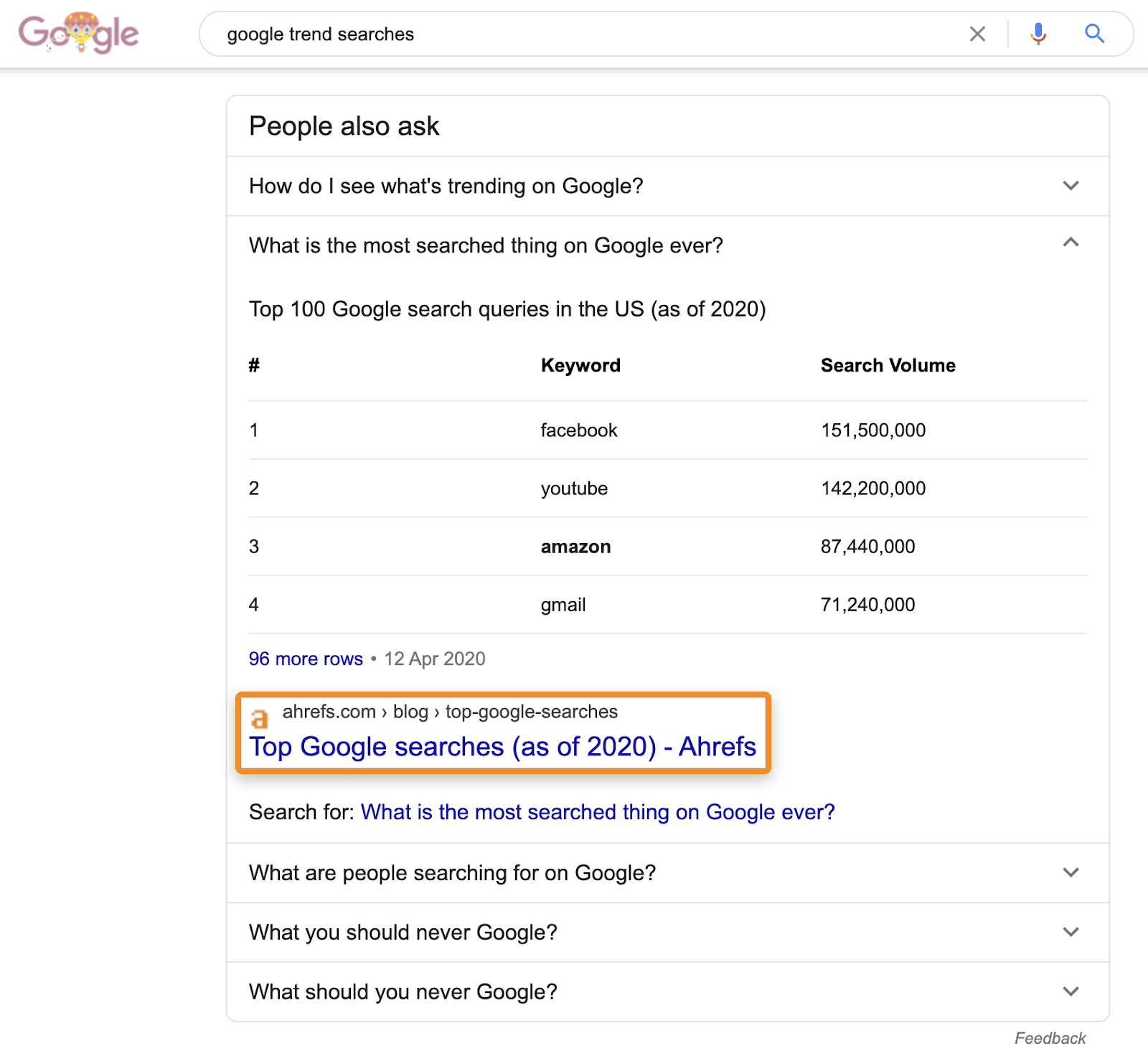

*Having checked a fair amount of answers during my research for this article, I couldn’t find one instance where this wasn’t the case. If Google pulls the answer to a question from your page once, it’ll pull the answer from your page for every other query where that same question shows up.
Unfortunately, there’s very little data available on how often people interact with and click sources in PAA boxes. That’s likely because Google doesn’t show us this data in Google Search Console, and there’s no other reliable source.
In fact, the only third-party study I’m aware of is this one from Backlinko. It states that, on average, only 3% of searchers interact with the PAA box.

But it also notes that this number varies wildly, with some queries seeing as high as a 13.6% interaction rate.

And remember, interactions aren’t the same as clicks. Expanding an answer would count as an interaction, so the number of people who end up clicking on the answer source is likely much lower.
Even worse, most PAA boxes show 3-4 answers by default, creating more choices for searchers and more competition for web pages.
Still, let’s be reasonably optimistic and make the following assumptions:
- 3% average interaction rate.
- 40% of interactions result in a click on the source.
- Interactions are split equally across four questions (i.e., 25% go to each).
Using this math, around 0.3% of searches with PAA boxes result in clicks. In other words, to get 100 extra clicks from the PAA box, you’d need to appear as the source for a question that shows up for keywords with a combined monthly search volume of around 33,000.
That might sound quite discouraging, but there are a couple of things to remember here:
- Google often shows the same question in the PAA box across hundreds of queries. And because it always pulls the answer from the same source, showing up for keywords with a high combined search volume is often easier than it sounds.
- Google might use your page as the source for multiple answers. For example, perhaps your page answers tons of common questions. If Google shows these questions across many search queries, impressions, and clicks can soon mount up.
It’s also worth keeping in mind that traffic isn’t everything. Getting 50 or 100 extra clicks to a page with a high conversion rate or value per visitor could significantly boost your bottom line.
My opinion, then, is that ‘optimizing’ for PAA boxes can sometimes be worthwhile for high traffic or high-value pages.
So let’s explore that more…
The basic process is simple: find a relevant PAA question, then make on-page optimizations to increase the likeliness of Google using your page as the answer source.
However, choosing questions to optimize for at random is inefficient. After all, that question might only show up in the PAA box for a couple of low-volume search queries. In which case, ranking is unlikely to send much traffic your way (or get you much exposure). Instead, you want to optimize for relevant questions that show up for lots of keywords with a high combined monthly search volume.
For example, the question “What are the top 5 search engines?” shows up in the PAA box for all these keywords:

Combined, they have a monthly search volume of 157,450.
Assuming one of our pages is ‘eligible’ to provide the answer to this question (we’ll talk more about that later), this would be a good question to optimize for.
But how do you find popular questions? And how do you optimize for them?
Here’s the process:
- Find pages that rank for lots of keywords
- Pull their keyword rankings
- Scrape the PAA questions
- Look for popular questions
- Make sure you’re not already the source
- Check that you’re eligible to rank
- Optimize your page
1. Find pages that rank for lots of keywords
It’s impossible to find all the keywords where Google shows a specific question in the PAA box. All we can hope to do is find questions that show up for lots of keywords with a high combined monthly search volume.
And to do that, we first need to find pages that rank for lots of keywords.
To do this, paste your site into Ahrefs’ Site Explorer, go to the Top Pages report, then sort by the Keyword column from high to low.
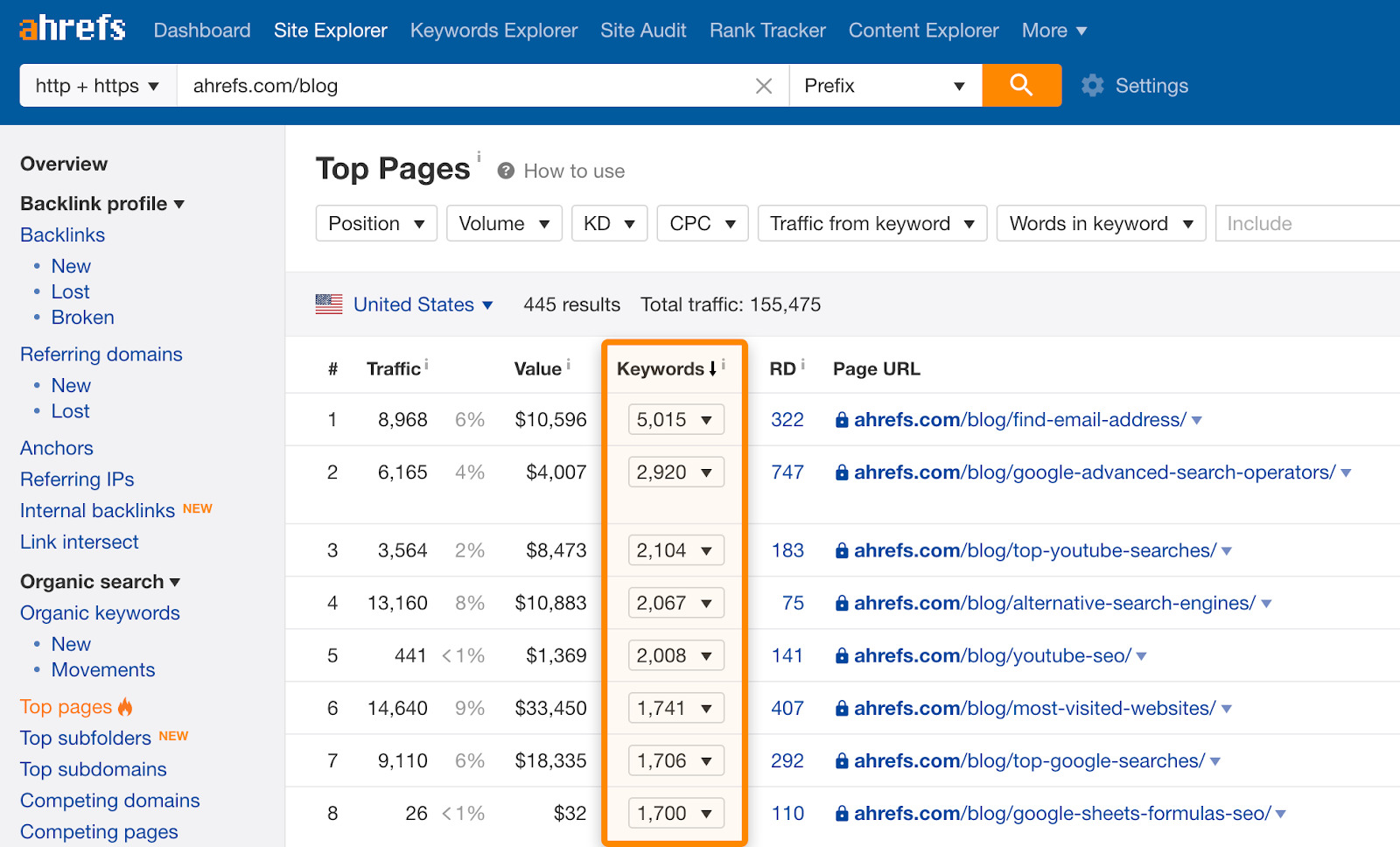
2. Pull keyword rankings
Choose a page from the list, paste the URL into Ahrefs’ Site Explorer, then go to the Organic Keywords report. This shows all the keywords the page ranks for.
Next, add these filters:
- Keywords in positions <20. Keywords in lower positions will likely be irrelevant, so they’re not worth taking into account.
- Keywords with a monthly search volume of at least 10. Remember, we want to optimize for questions that appear in PAA boxes for popular search queries.
- Keywords with PAA boxes in the results.
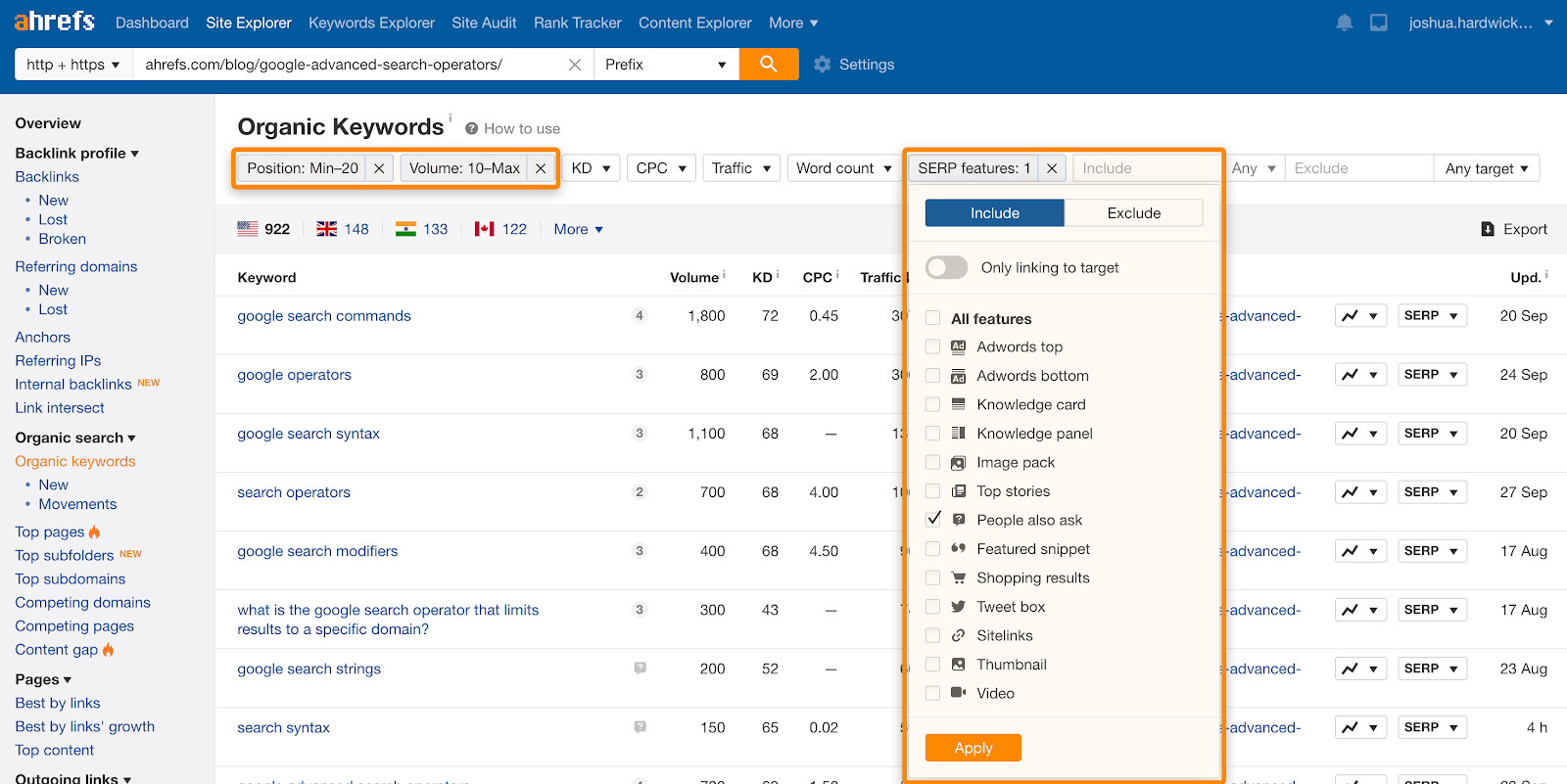
Export the full list of keywords from the filtered report to CSV.
3. Scrape PAA results
Before you can optimize the page, you need to know which questions are showing up in the PAA boxes for these keywords. To do that, open the CSV from the previous step, then copy and paste the full list of keywords into Ahrefs’ Keywords Explorer.

Hit the “Export” button, check the “Include SERPs” box, then export.
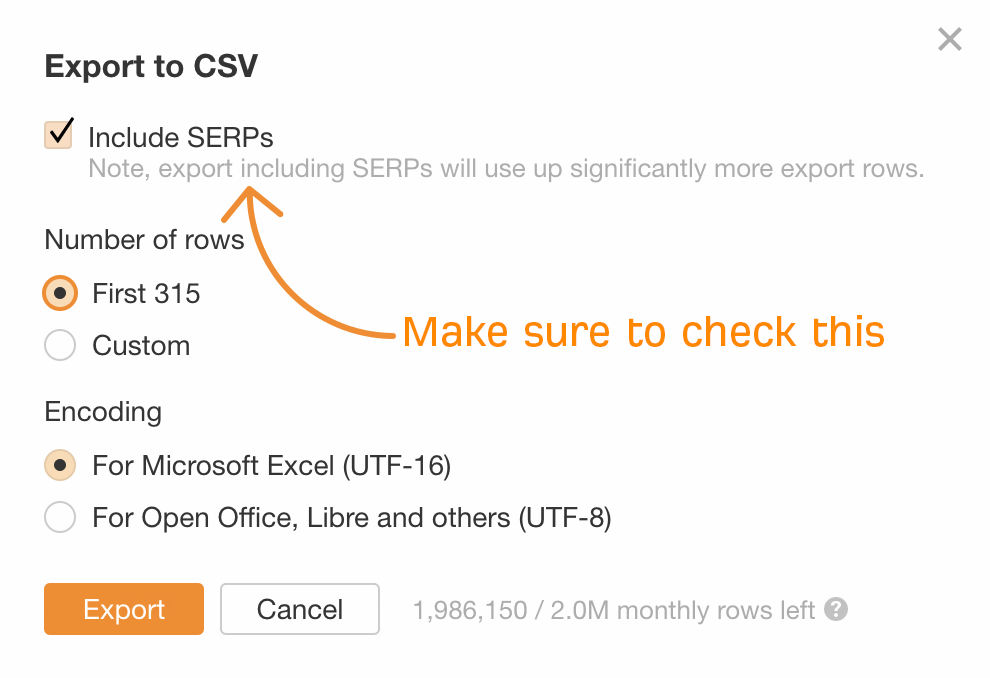
4. Look for common PAA questions
Google seems to always use the same source for a question’s answer, even if it shows up in the PAA box across multiple queries. So, the next step is to find the most frequently occurring questions for your page. After all, if the same question is showing in the PAA box for hundreds or thousands of keywords, then it’s potentially worth optimizing for.
The easiest way to do this is to paste or import the CSV from the previous step into a Google sheet, then create a pivot table.
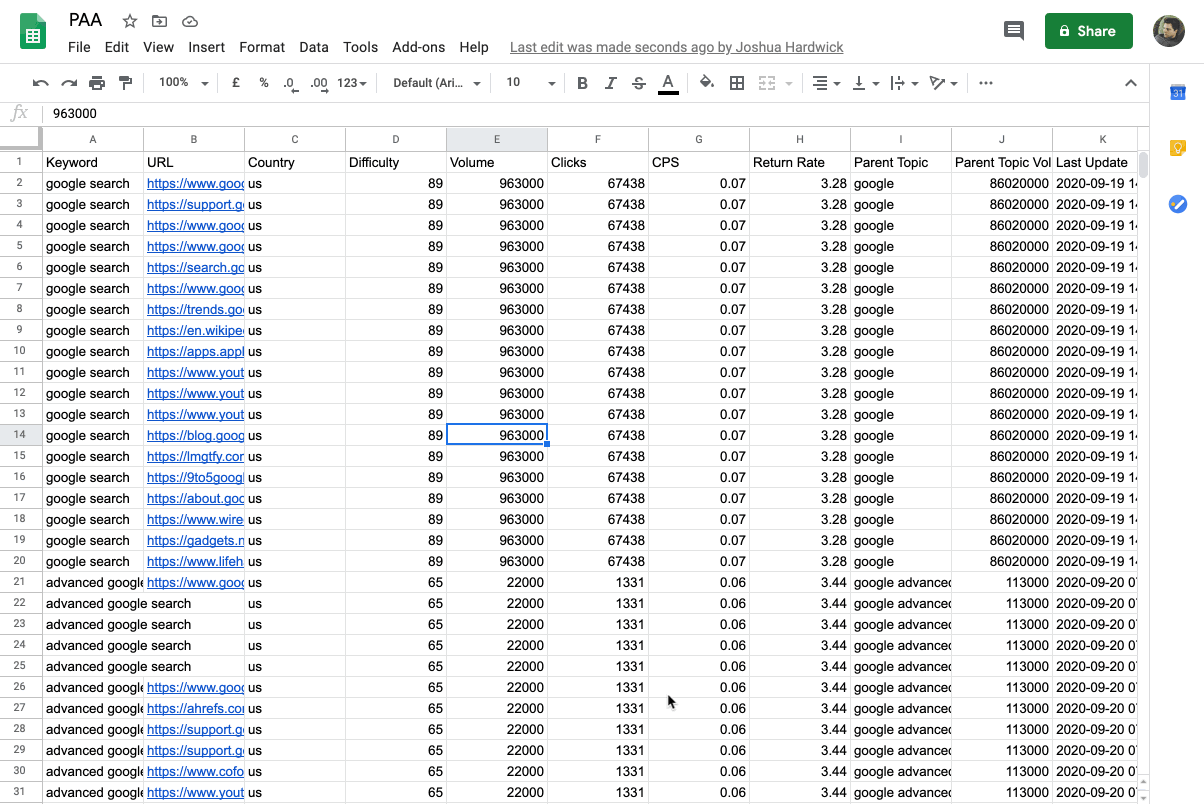
If you’ve never created or heard of a pivot table before, don’t worry. It’s basically just a way to extract and visualize data from a dataset.
Just replicate these settings and you’ll be good to go:

Note that the filter where it says “Showing 1 Item” above is set to only ‘People also ask’ results.
The result should show how many times each question appears in the PAA box across all the keywords the page ranks for, plus the total sum of search volume for those keywords.
For example, the question ‘What are the top 10 websites?’ shows up in the PAA box for 212 keywords that our list of Google search operators ranks for. And the sum of monthly search volumes for those keywords is 61,800.

If Google would use our page as the source for the answer to that question, it would probably send a few hundred extra visits our way.
5. Make sure you’re not already the source
Before going any further, you should rule out the possibility that Google is already pulling the answer from your page. You can do that by searching for a query where that question shows in the PAA box.
To reveal those queries, hit the “+” icon on the question itself:

Copy and paste one of these into Google. You should see the question in the PAA box in the SERP. Expand it and see if you’re the source.
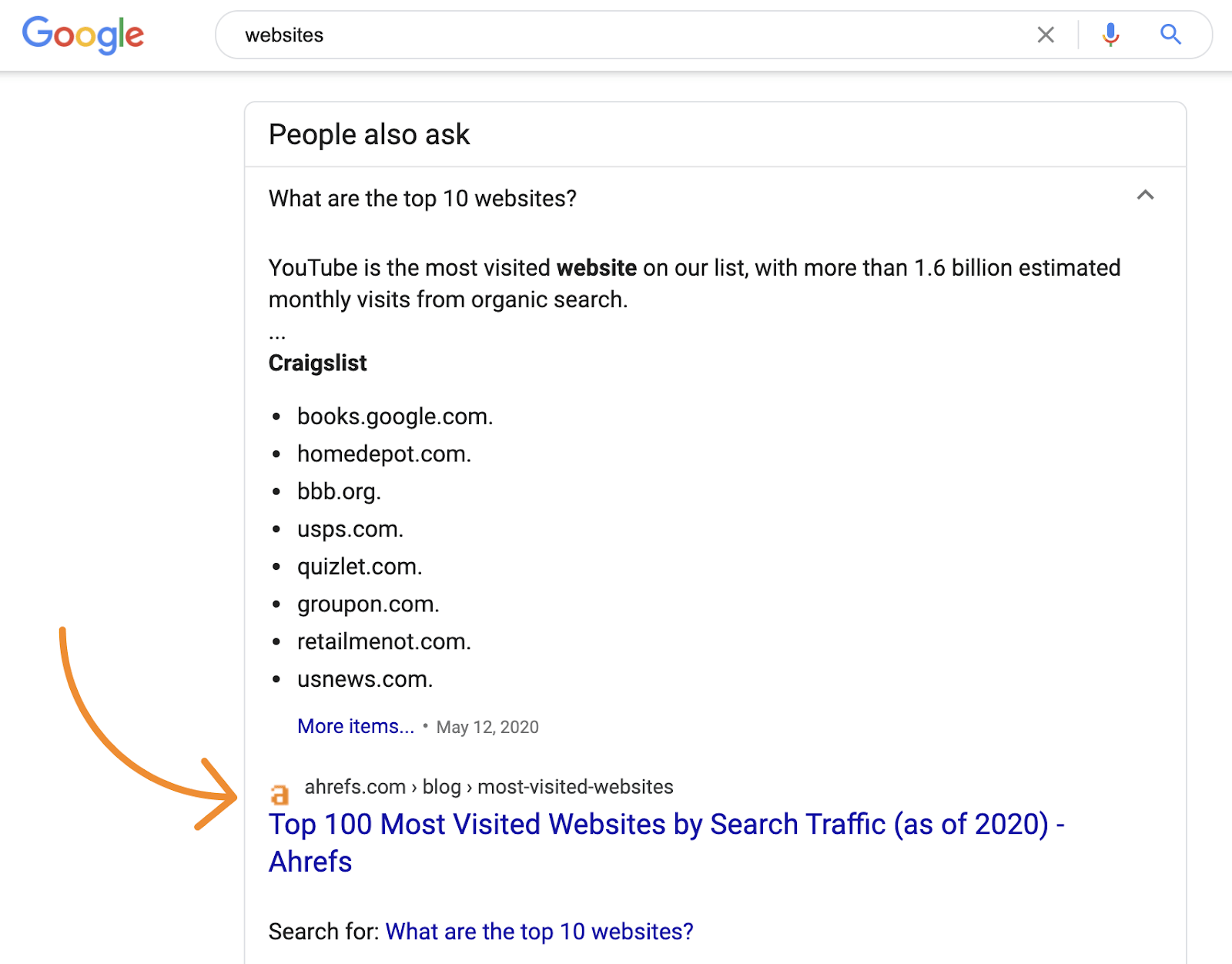
If you are the source, move on to the next question. There’s no logic optimizing for a question where you’re already the answer.
6. Check that you’re ‘eligible’ to rank in the PAA box
Most of the answers Google chooses for the PAA box seem to come from one of the top ten rankings for the question itself.
For example, if you search for ‘most visited websites’, the answer for the question ‘What are the top 10 websites?’ in the PAA box comes from our list of the most visited websites.
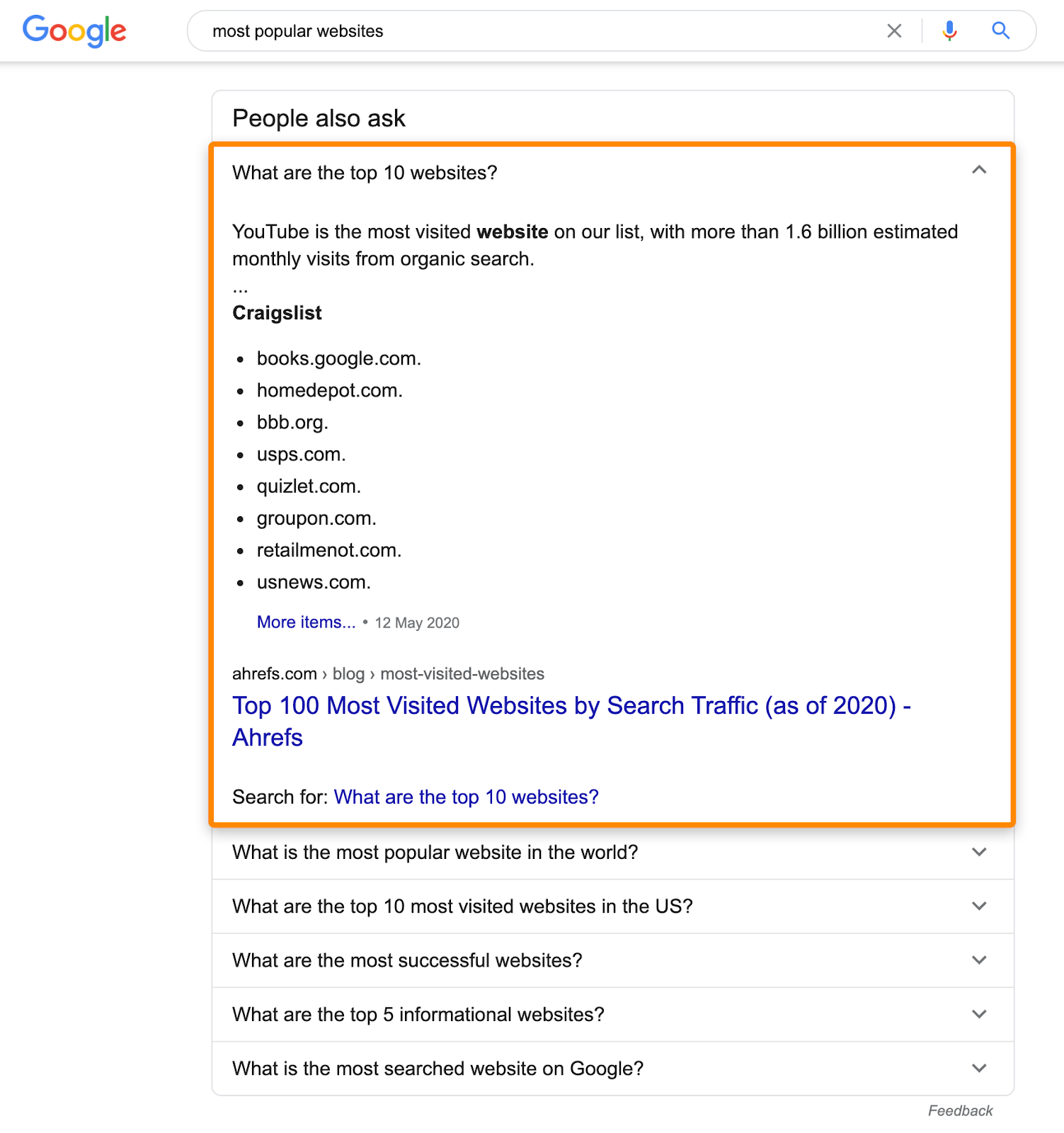
And if you search for that question, you’ll see our page in position #3:

So, unless you’re already ranking in the top 10 for the question itself, chances are your page isn’t an eligible answer source. If that’s the case, go back and choose a different question to potentially optimize for.
7. Optimize your page
If you’ve got this far, then the following should be true:
- You’ve found a popular PAA question.
- Your page is not currently the source of the answer.
- You rank in the top 10 when you search Google for that question.
Good. Now, how do you optimize your page?
Most of the same best practices exist here as when optimizing for featured snippets. Here’s the basic process:
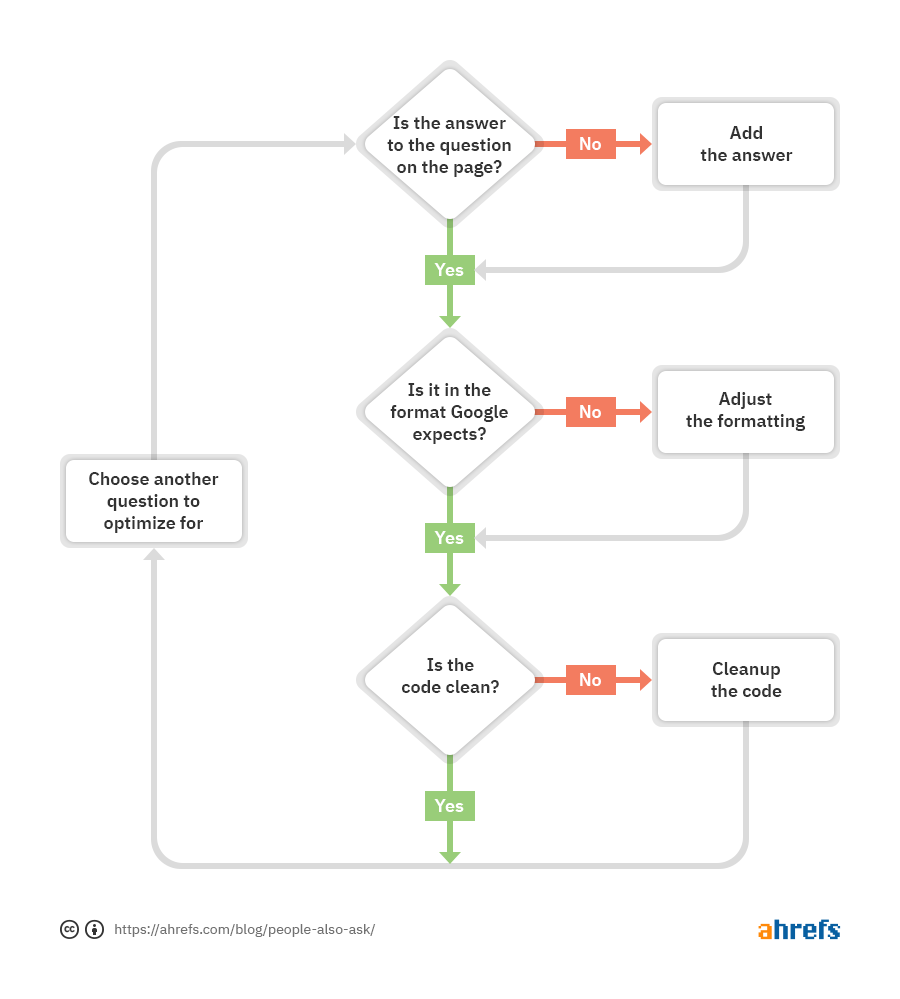
Let’s go through each of these in more detail.
Is the answer to the question on the page?
If the answer isn’t on your page, you need to add it. After all, there’s zero chance your page being selected as an answer source if it isn’t actually a source.
Note that you don’t necessarily need to use the same exact wording here. For example, Healthline is the source of the answer for the question “What is a dehumidifier used for?”, but the page itself doesn’t use this phrasing. Google pulls the answer from the intro below the H1 that reads “What Does a Dehumidifier Do?”
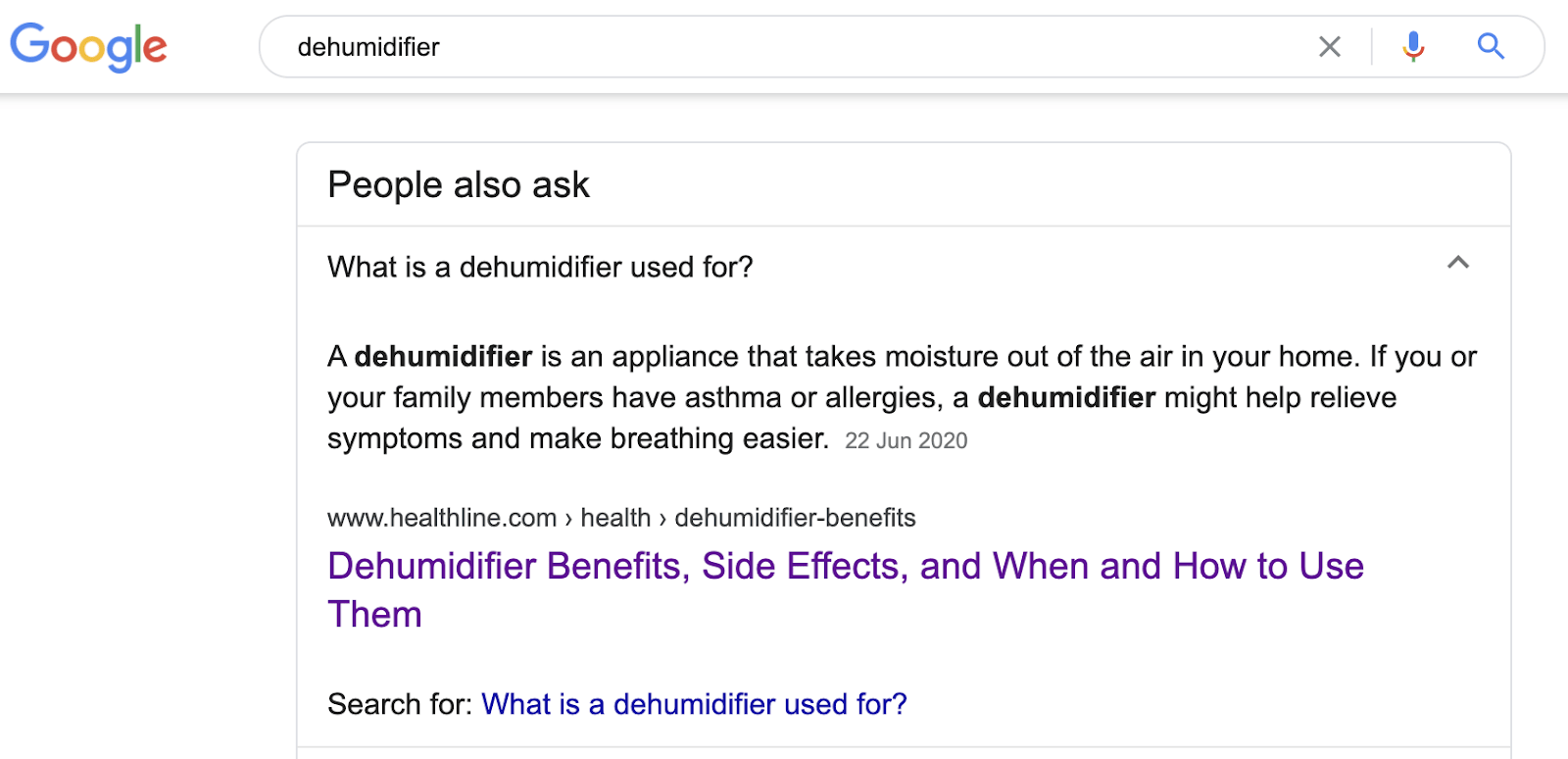

It’s also important not to shoehorn answers to irrelevant questions into your content. For instance, if your page is about the top 100 most visited websites, trying to optimize for a PAA question like ‘What is a website?’ is a bad idea.
Is it in the format Google expects?
Like featured snippets, PAA answers come in various formats. Text, tables, lists, and videos are most common. You can check which format Google expects by looking at the current answer to the question.
For example, it’s clear that Google expects an unordered list format for the question “What is the best accounting system for a small business?”:

If your content doesn’t match this format, it’s unlikely to be chosen as the answer source. You can fix this by making formatting changes to bring your content in line with expectations. As a bonus, this will also often make your content more digestible for other visitors.
Is the code clean?
Messy code can often confuse Google, so it pays to make things as clear as possible. That means using clear headings (H2, H3, etc.), and removing any unnecessary fluff.
For instance, if we wanted Google to pull the answer to the question ‘How do I become an affiliate marketer?’ from this post, then it might be worth summarizing the key points from the seven steps straight after.

People have also theorized that marking up questions and answers with schema may increase your chances of appearing in PAA boxes. Just know that this isn’t a requirement, but it certainly seems logical that it would help as it’s easier for Google to extract the relevant information.
Recommended reading: What Is Schema Markup? How to Use It for SEO
Ranking in common PAA boxes is not the only way they can help with SEO.
Here are a few other ways you can use them:
1. Make better content
PAA boxes often give insight into related things searchers want to know. Incorporating these answers into your content can lead to more in-depth content that better satisfies searcher intent.
For example, take a look at the PAA box for “guest blogging”:

These are all things that searchers might reasonably expect to learn when they click a result, yet our post doesn’t answer any of these questions. Perhaps that’s why it’s only ranking in position 12, despite having more backlinks than many of the pages that outrank it.
2. Find new keywords to target
Most of the questions that show up in PAA boxes rarely seem to have high monthly search volumes.
Just look at these questions, for example:

If we paste them into Ahrefs’ Keywords Explorer, they all have ten or fewer estimated monthly searches in the US.

But that doesn’t mean people aren’t searching for answers to these questions in other ways.
For example, if we install Ahrefs’ SEO toolbar and search for one of those questions, we see that the top-ranking page gets an estimated 4,800 monthly search visits.

That’s because the page is getting traffic from lots of other similar keywords, like “new airpods” and “airpod 3.”

In this case, you would have probably found these keywords with a conventional keyword research process. But if you keep expanding to reveal more questions in PAA boxes, you’ll often end up coming across questions related to topics you never thought of writing about.
For example, when I searched for “best accounting tool”, there were many questions related to software I’d never heard of like Xero, Wave Accounting, and Peachtree. Using these as ‘seed’ keywords in Keywords Explorer reveals hundreds of worthwhile keywords I probably would never have found otherwise.
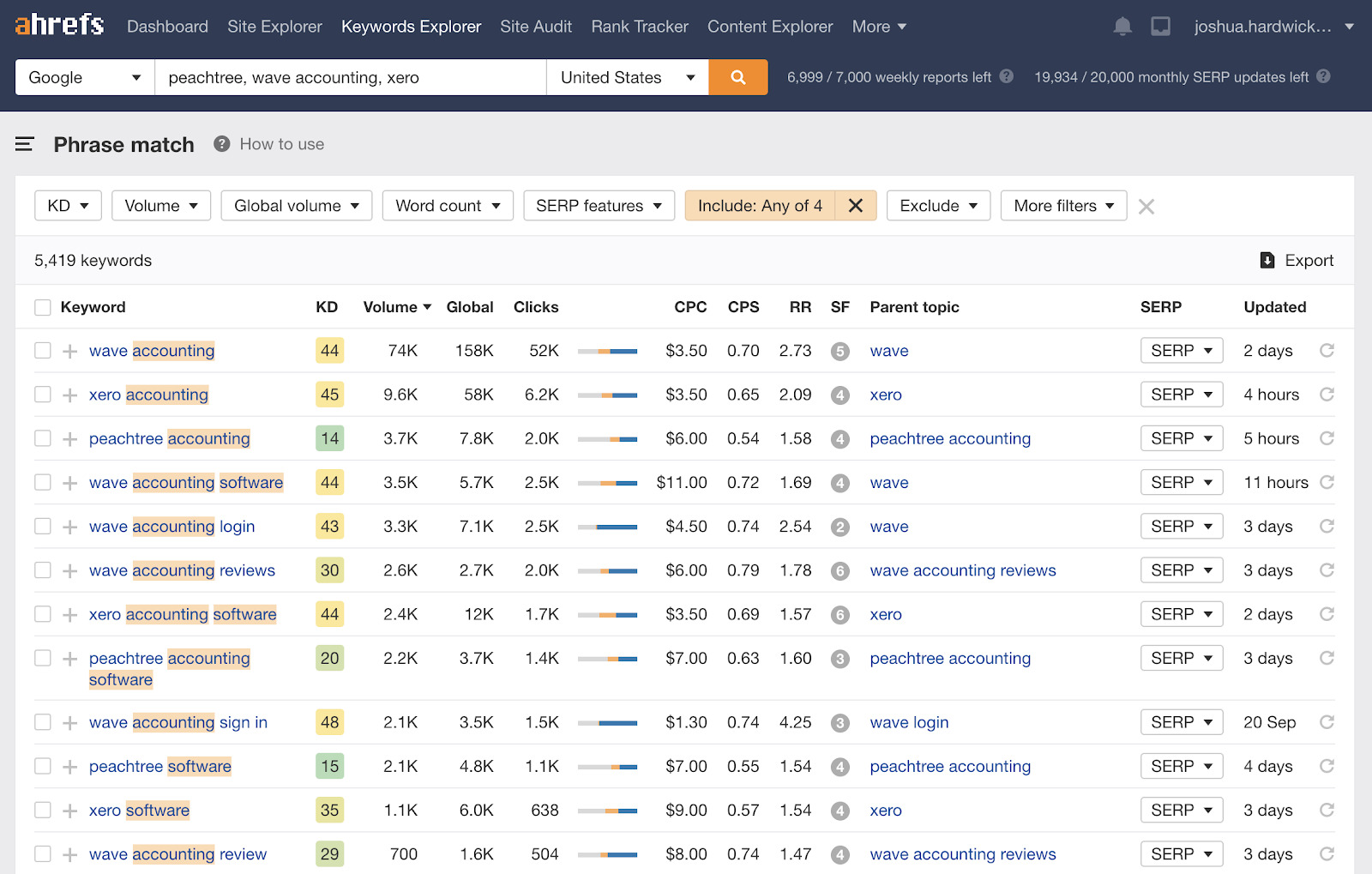
3. Give better answers to branded queries
Branded queries are usually low-volume, but people searching for them are often near the bottom of the marketing funnel and are close to conversion. If they’re getting misleading or inaccurate information at this stage, that could easily throw them off their purchase.
For example, take a look at the answer to this question when you search for ‘QuickBooks’:
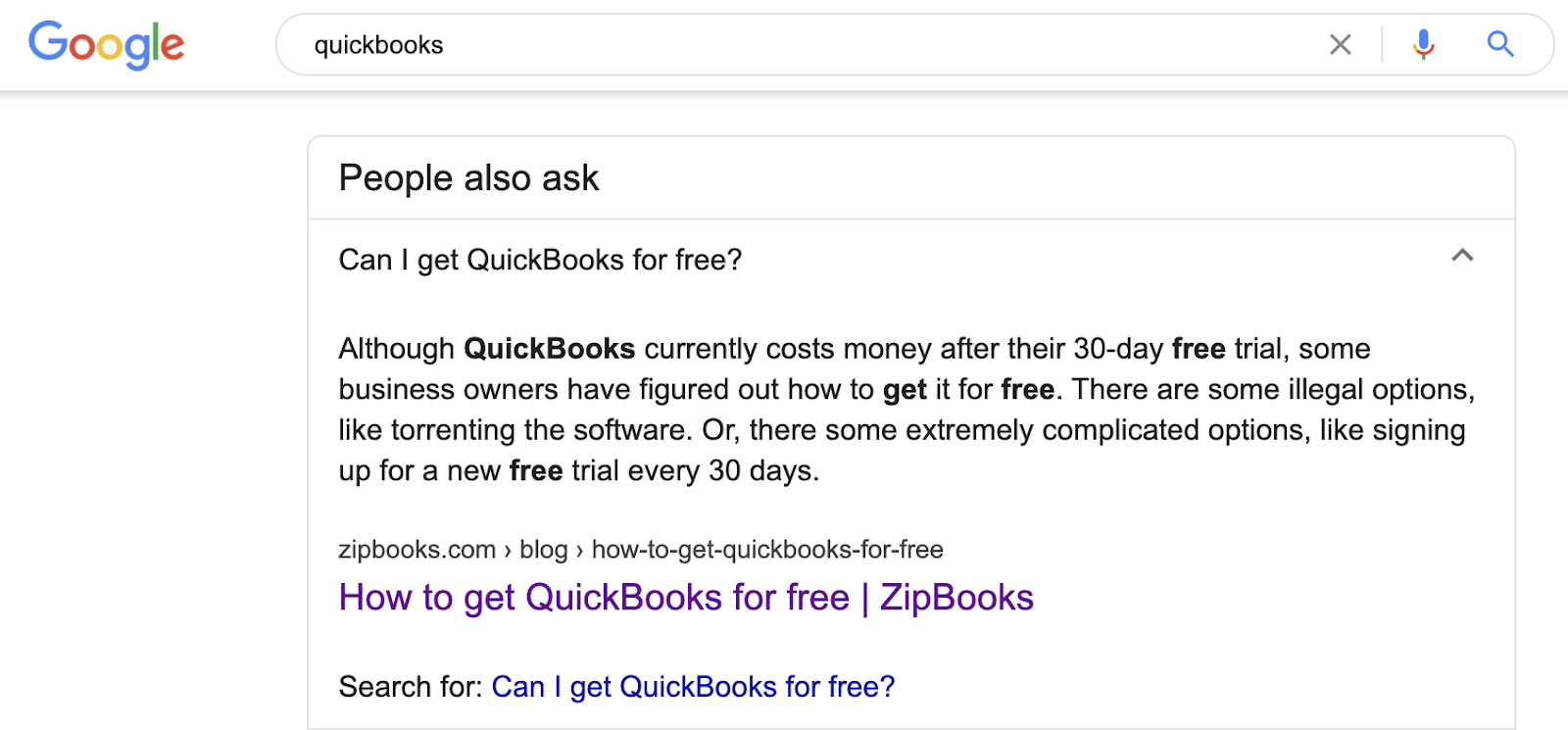
Not only does this answer come from a competitor, but it suggests illegal ways to get Quickbooks for free. That’s not good for Quickbooks, so this is an answer they’d almost certainly want to optimize for.
Final thoughts
Ranking in PAA boxes can undoubtedly boost organic traffic, but you need to choose your battles wisely. There’s no point optimizing for a question that shows up only now and again for low-volume keywords.
Does this mean it’s worth doing for everyone? Probably not. If your site gets little ‘regular’ organic traffic, there are probably more important things to focus on than ranking in PAA boxes.
Got questions? Ping me on Twitter.




